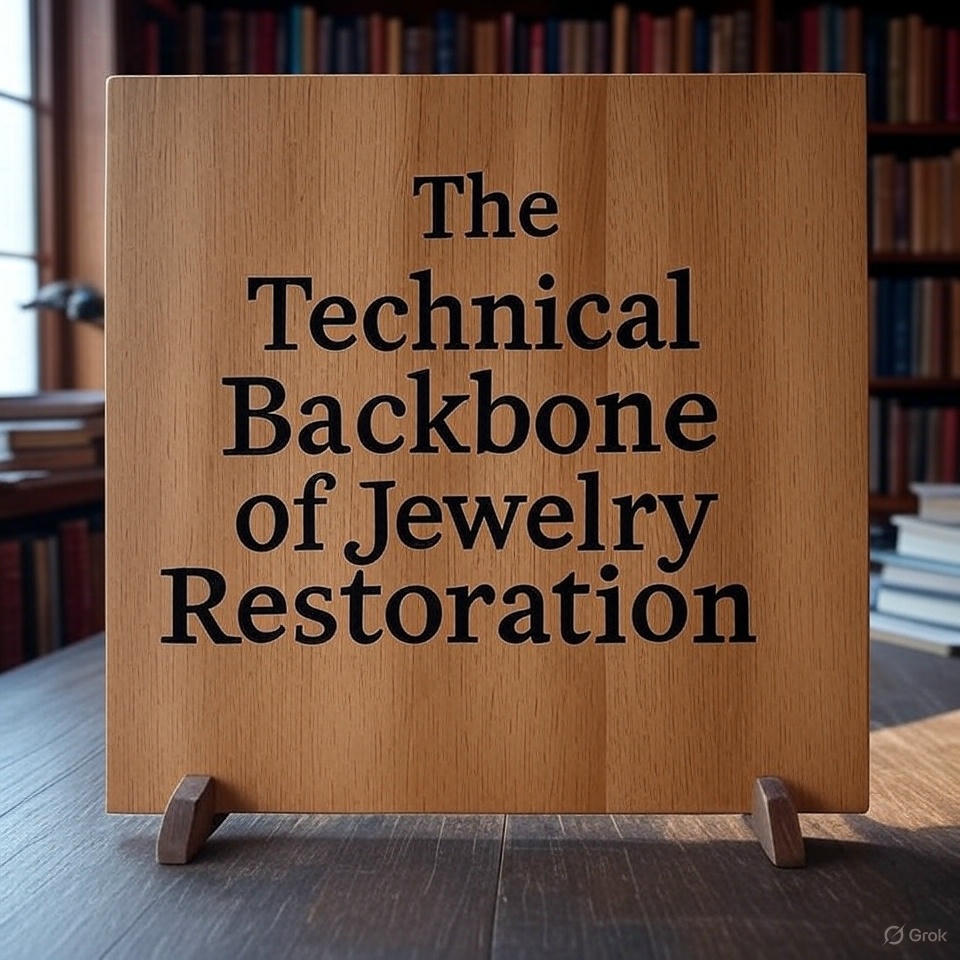Micro-Welding and Magnification: The Technical Backbone of Jewelry Restoration

When most people hear the term jewelry repair, imagine that someone adjusts a loose closure or a scratched gem. However, there is a technical world under the surface, which is driven by machines, microscopes and skills that compete with the production of industries such as aerospace, watchmaking and micro-instruments.
Today’s jewelry repair is not just about beauty-it is about precision technology, materials science and tool-supported craftsmanship. From the micro-whitening of a cracked setting to the ultrasound cleaning, which at frequencies that the human ear cannot recognize, the repair bank reflects a miniature tech laboratory.
Precision of the perception: understanding of the craft behind the shine
Jewelry repair: a practice rooted into accuracy
Instead of just finding cosmetic improvements, the modern restoration of jewelry washing includes the accuracy of undermillimeters and an understanding of how different metals and stones behave under stress. Technicians often deal with fractures that are invisible to the mere eye, problems with the correct alignment and reinforcement weakened joints – all at the same time maintain the original design.
Just like engineers of micro -ingredients, professional jewelers use tools that are calibrated for tasks that require precise dimensions and stable control. It is a top -class trade that bridges art with technical execution.
Trade Tools: Industrial Tech hits personal decoration
The role of laser welding in the repair of jewelry
One of the greatest breakdowns in jewelry repair technology was the laser welding. Laser welders use the energy exactly, in contrast to conventional soldering, which transmit the heat via the object. This means that jewelers can repair a cracked shaft or can resume zilt without removing gemstones or increasing heat damage.
Enable laser welders:
- Microscopic fusion of metals
- Repairs on the flattened and hollow jewelry
- Cleaning seams and stronger joints
These machines are inspired by medical devices and aviation technologies and provide radiant widths smaller than human hair. There is no exaggeration to say that jewelers operate on the nanoscopic scale.
Ultrasonic cleaner: The vibration scientists
As soon as repairs have been completed, most parts go through an ultrasonic cleaner-one device that uses high frequency sound waves to move a liquid cleaning solution. This process shakes loose dirt and dirt that the hand cleaning cannot achieve.
Expanded: How enlargement tools enable the accuracy at micro level
Bank areas and headband magnifying glass: essential for detailed work
The repair of fine jewelry requires a level of view that goes far beyond human ability. Jewelers often wear head mounts or work under bank microscopes to ensure that every weld seam, every stone alignment and the surface adjustment are perfect.
These tools enable it:
- Precise inspection of micro-cracks or defects
- Orientation of components in narrow, sensitive rooms
- Improved control during soldering or plug environment
Draw parallel co -hearing and microelectronics
Similar to a watchmaker who puts together a chronograph or a technician who compiled a microchip, jewelers rely on the visual improvement to navigate tiny components and to ensure flawless results.
Materials matter: a scientific approach to metal and stone behavior
Working with various alloys and their properties
Every type of metal reacts uniquely to warmth and pressure. For example,
- Platin is denser to manipulate more heavier, but ideal for safe settings.
- Due to its rigidity, Titan needs special tools and controlled environments.
Understanding these variables is essential to ensure that the repair does not weaken the material or changes the balance of the article. This level of metal knowledge reflects disciplines such as precision processing and tool calibration.
Gemstones and sensitivity to temperature and pressure
Jewelry is not just about metal, but a wide range of natural stones grown in the laboratory. Certain gemstones are extremely sensitive:
- Opals can crack due to their water content.
- Smaragde can contain internal defects that break under heat.
- Although diamonds are hard, you can still be susceptible to improper repairs.
Conclusion: A technical profession that is hidden in sight
The repair of jewelry is not just a question of polishing or replacing – it is a process that is driven by technical knowledge, advanced devices and industrial discipline. Each adjustment is influenced by material properties, physical restrictions and optical precision.
Far from being a creative trade, it requires the same level of care and accuracy that can be found in aerospace technology, watchmaking and scientific instrumentation. Regardless of whether it is restored or a cracked band repaired, jewelry repair specialists are tacitly as a microg rubber of the elegance.
The next time you hand over a piece for repair, remember: You don’t just pay for beauty – you invest in precision and technical championship.
Frequently asked questions
1. What distinguishes the repair of modern jewelry from traditional methods? Today’s repair methods use laser welding, ultrasound cleaning and digital modeling, which enable more precise, damage -free adjustments compared to older, heat -based techniques.
2. Are all stones safe during the repair process? Not all. Fragile stones such as emeralds and opal require additional care. Experts often remove or protect them from work to avoid damage caused by heat or pressure.
3. How do jewelers go together with old surfaces with vintage pieces? You use a mixture of tailor -made mixture, manual polishing and sometimes electroplating to imitate original textures and colors without affecting the durability.
4. Can damaged rings or necklaces always be repaired? Not always. If the metal is too tired or broken in critical areas, a complete reconstruction may be required. Expert technicians rate every article before you recommend repair or replacement.





